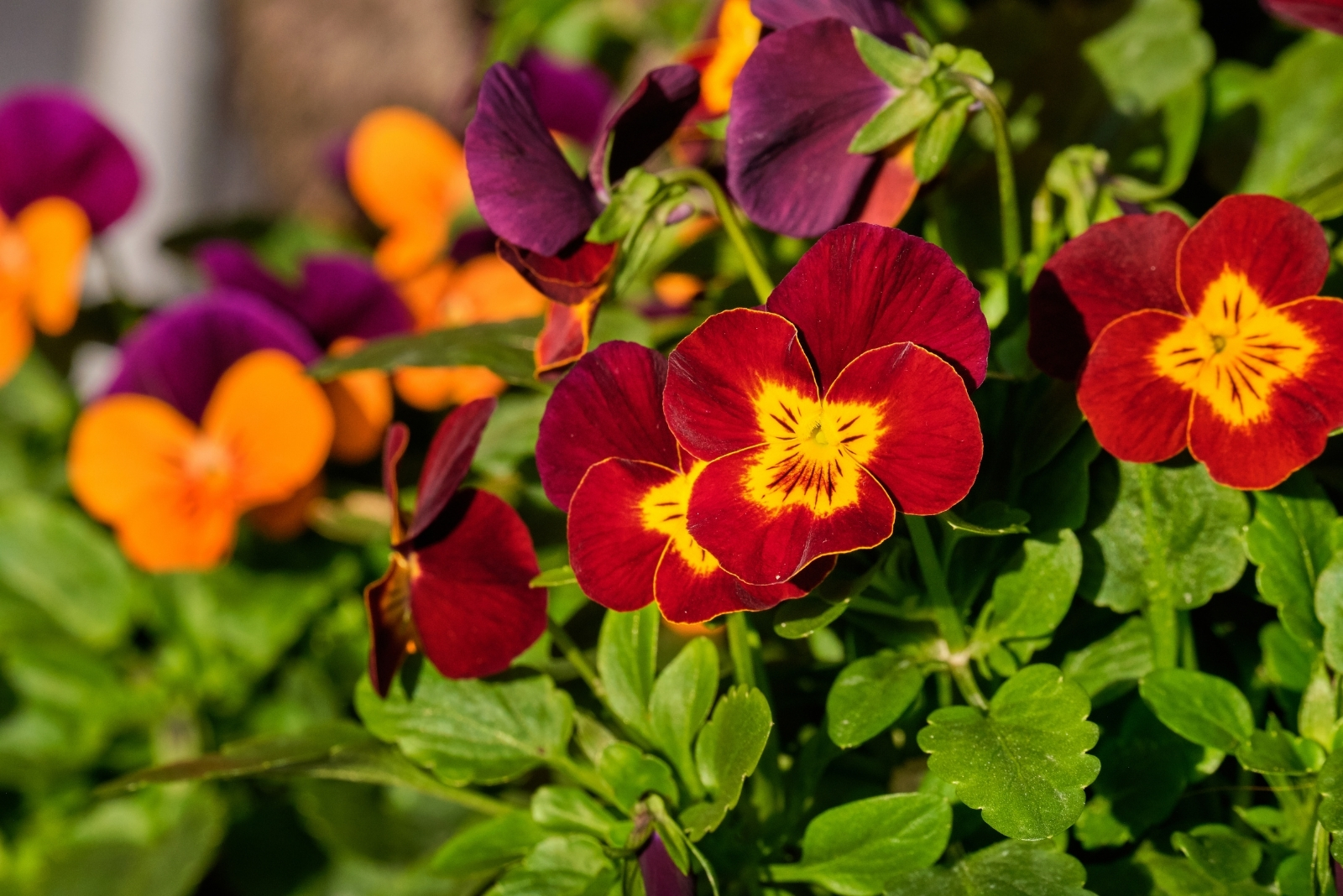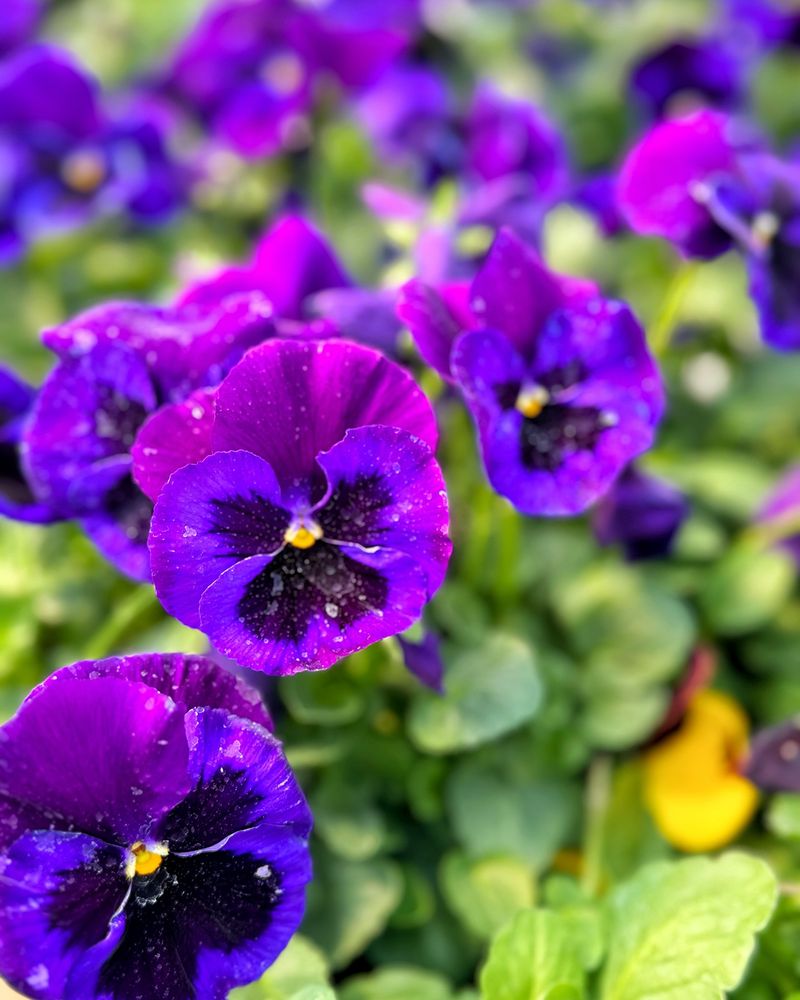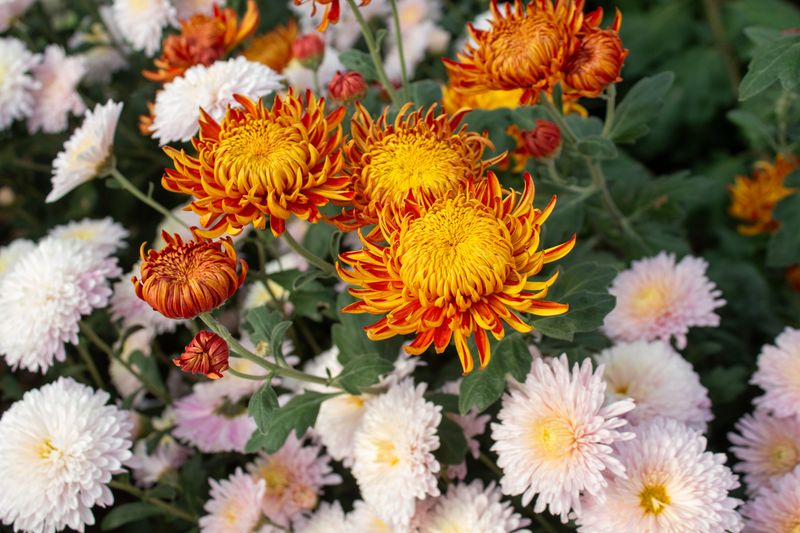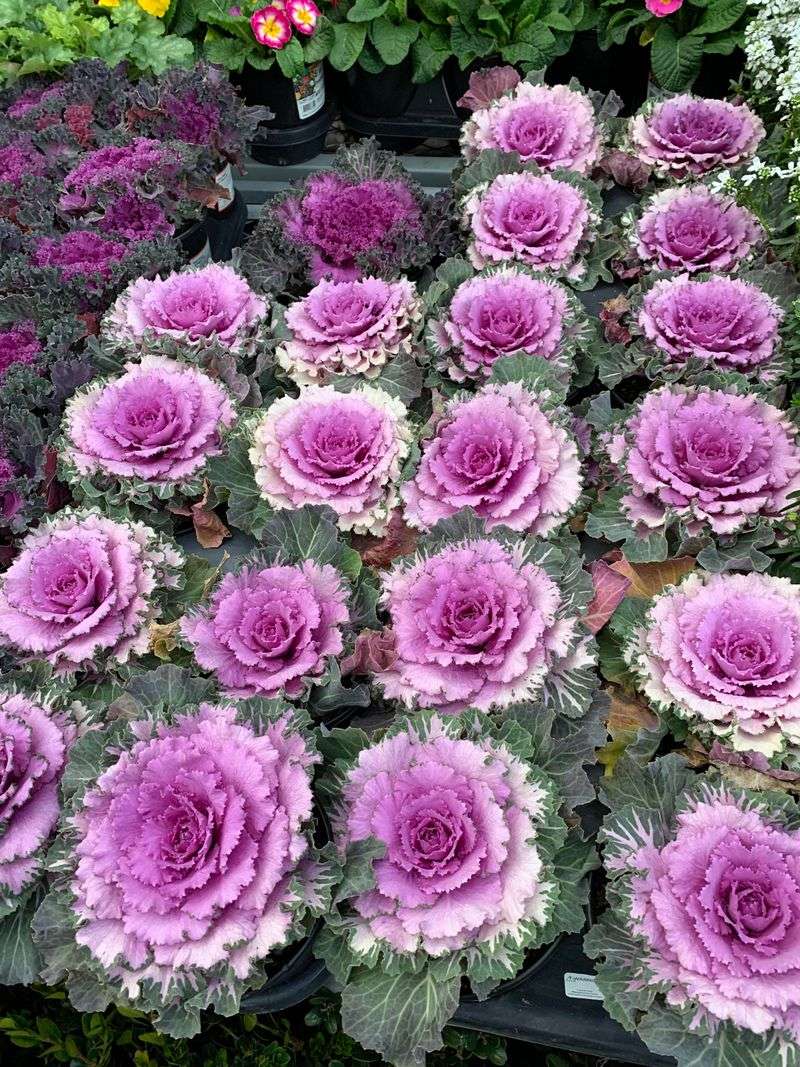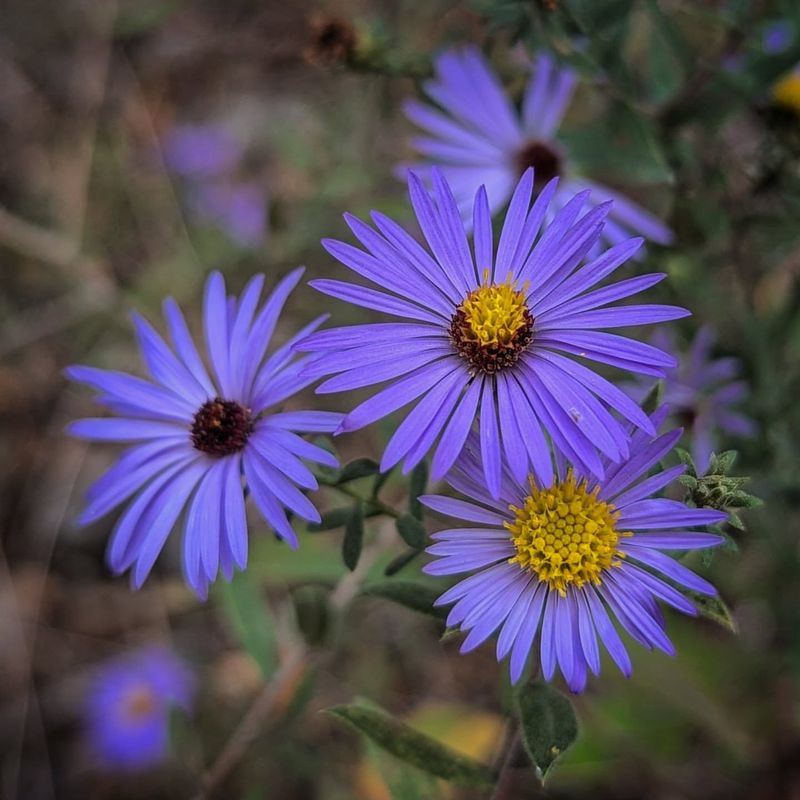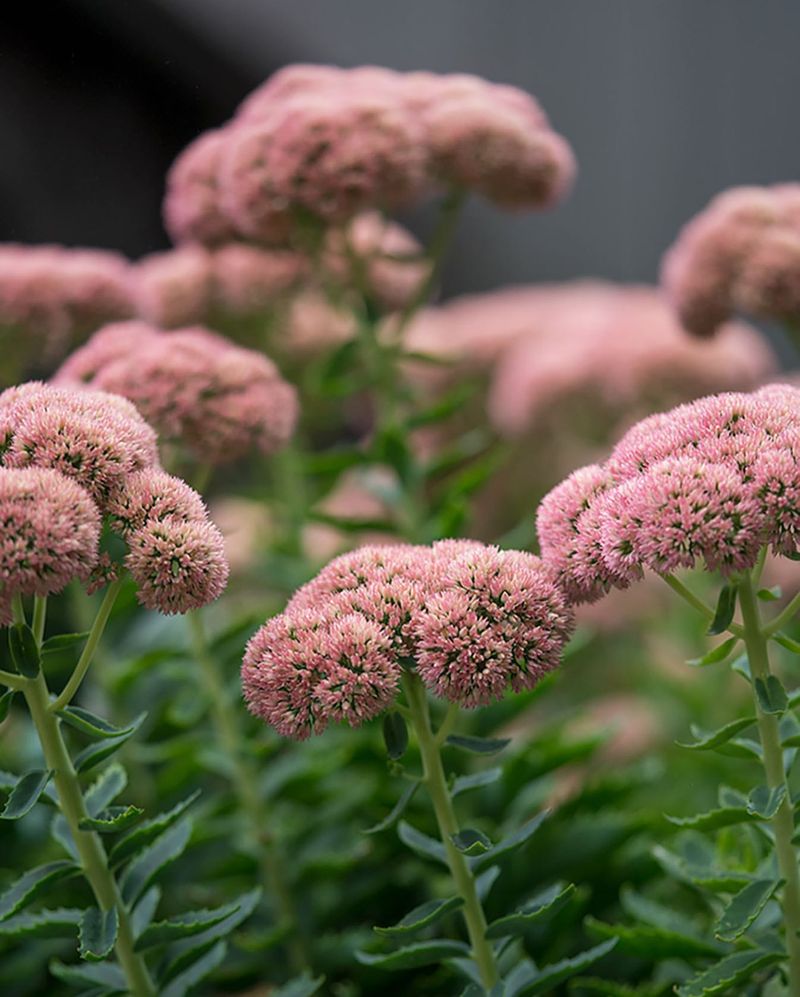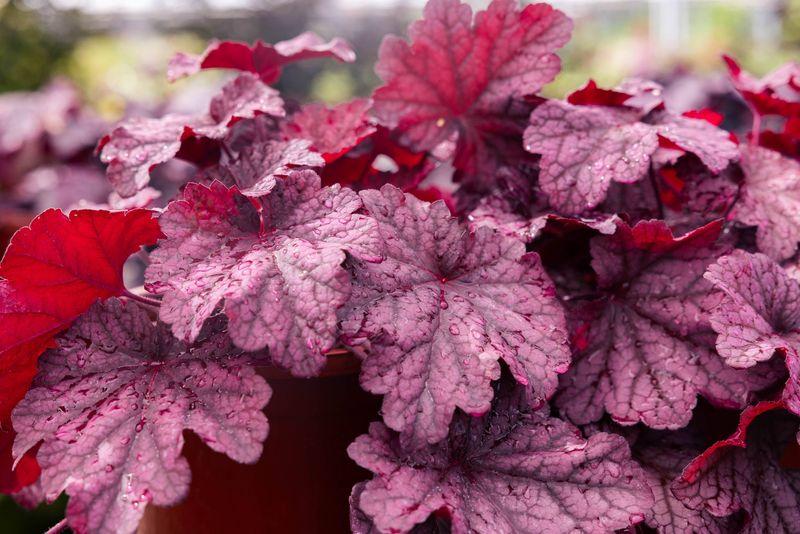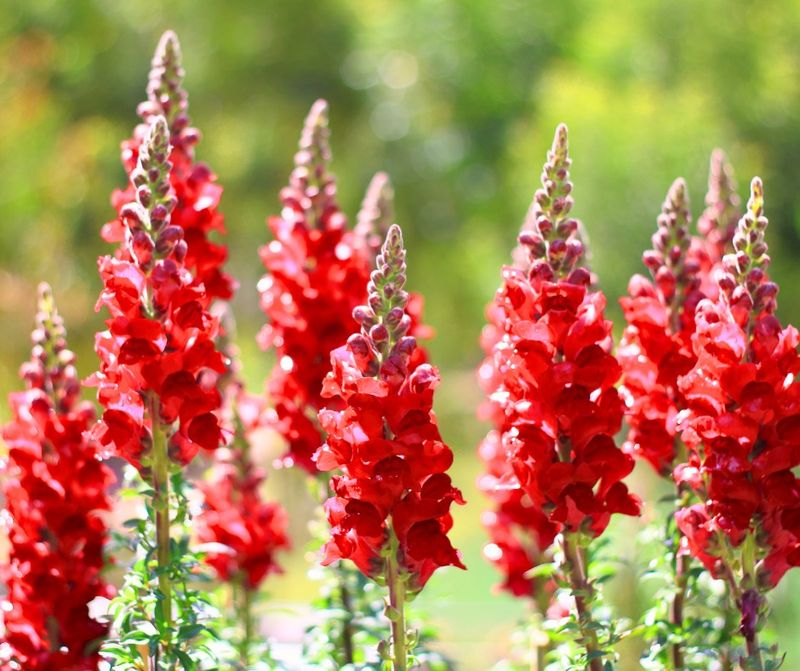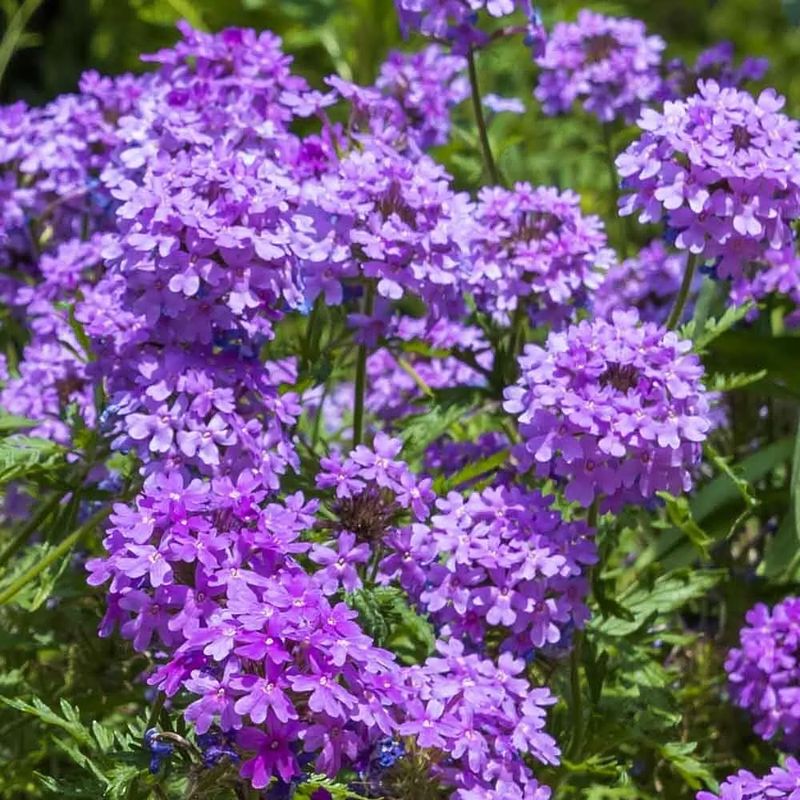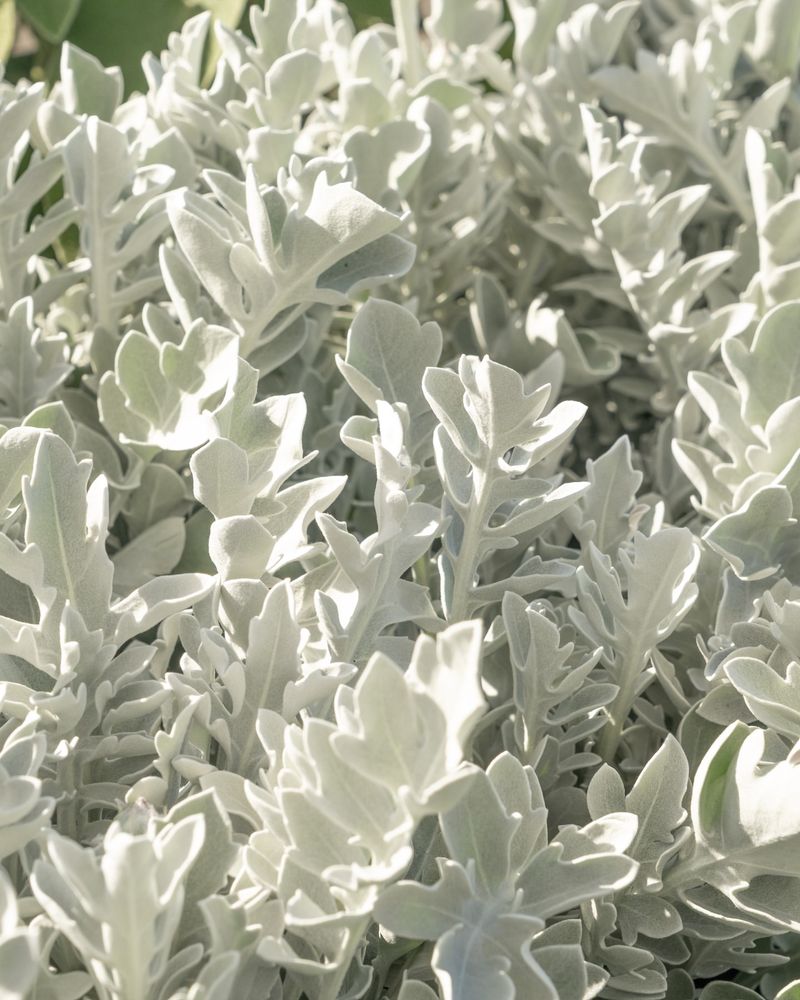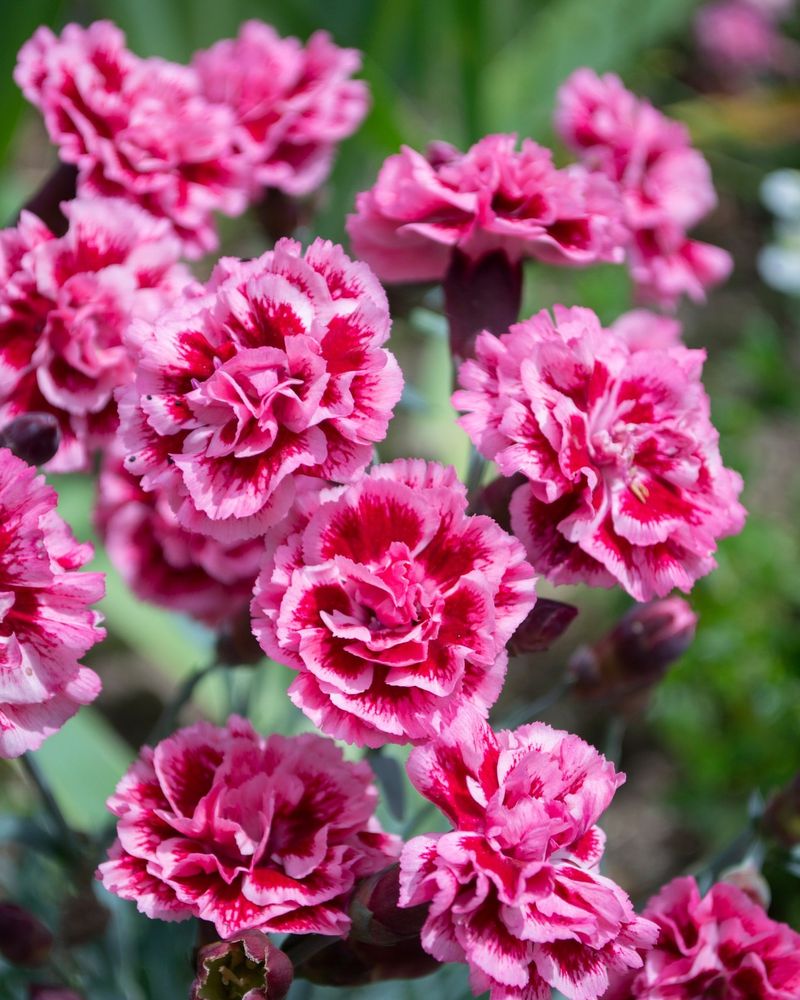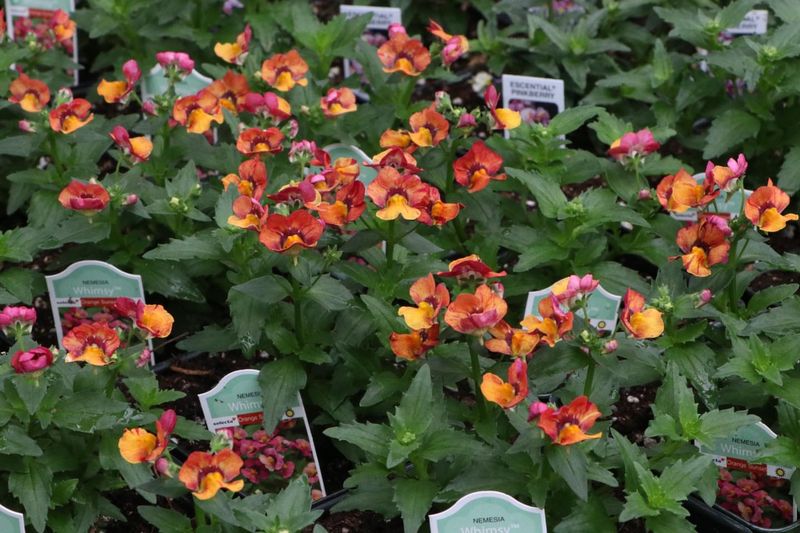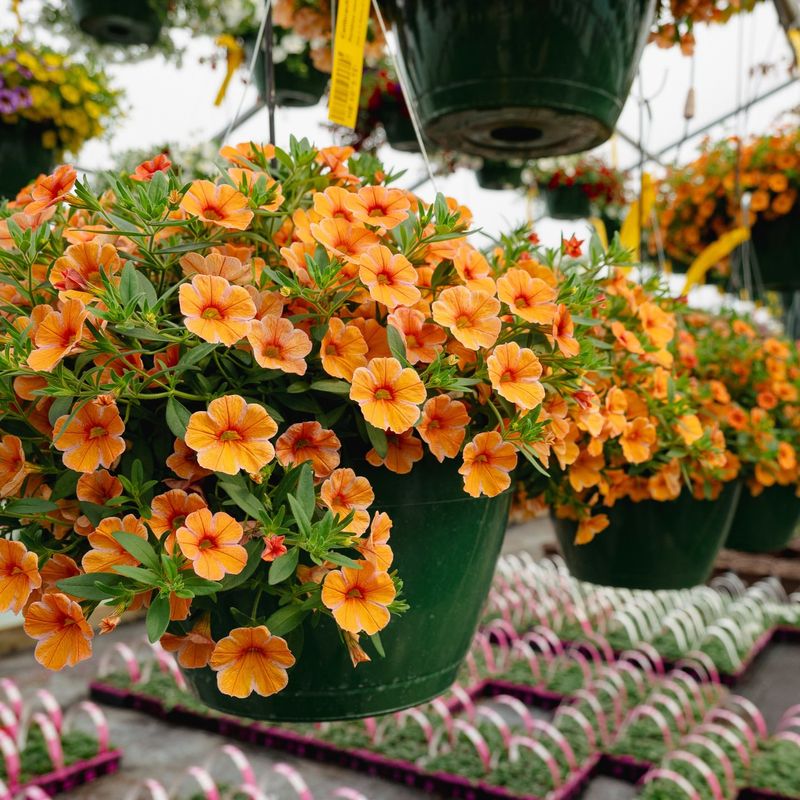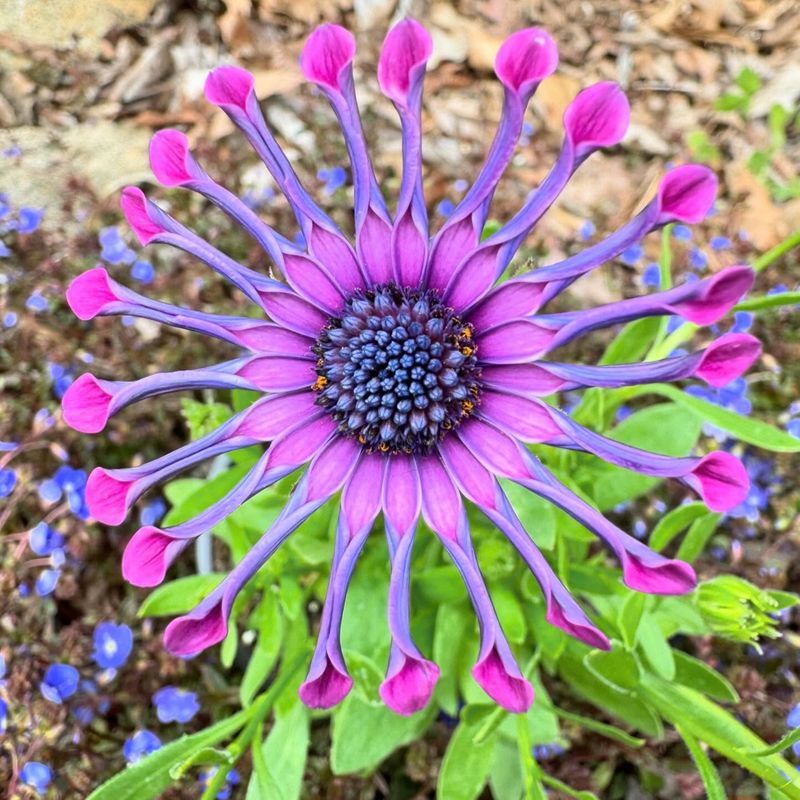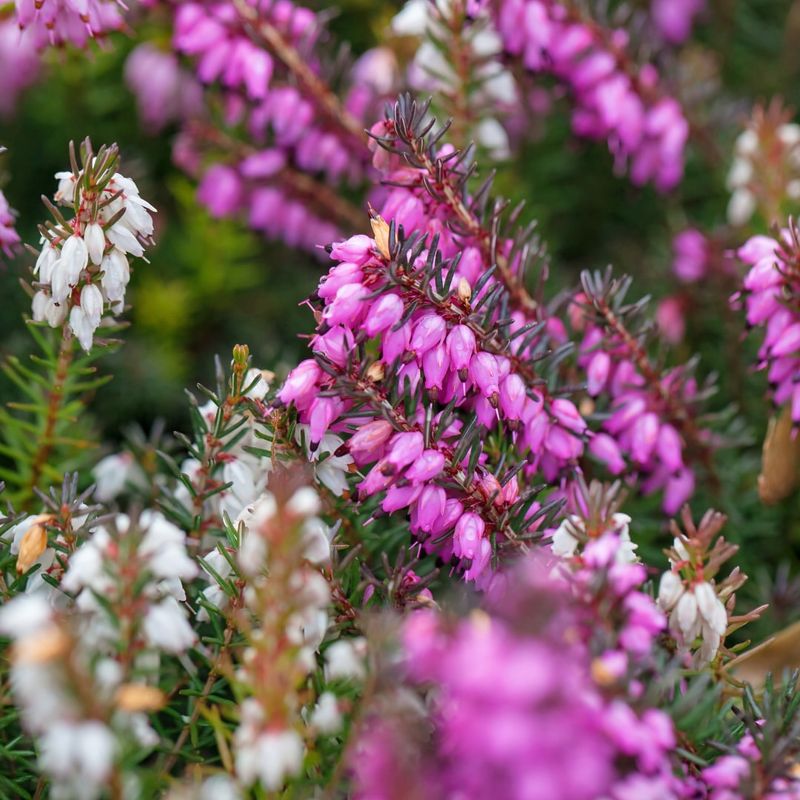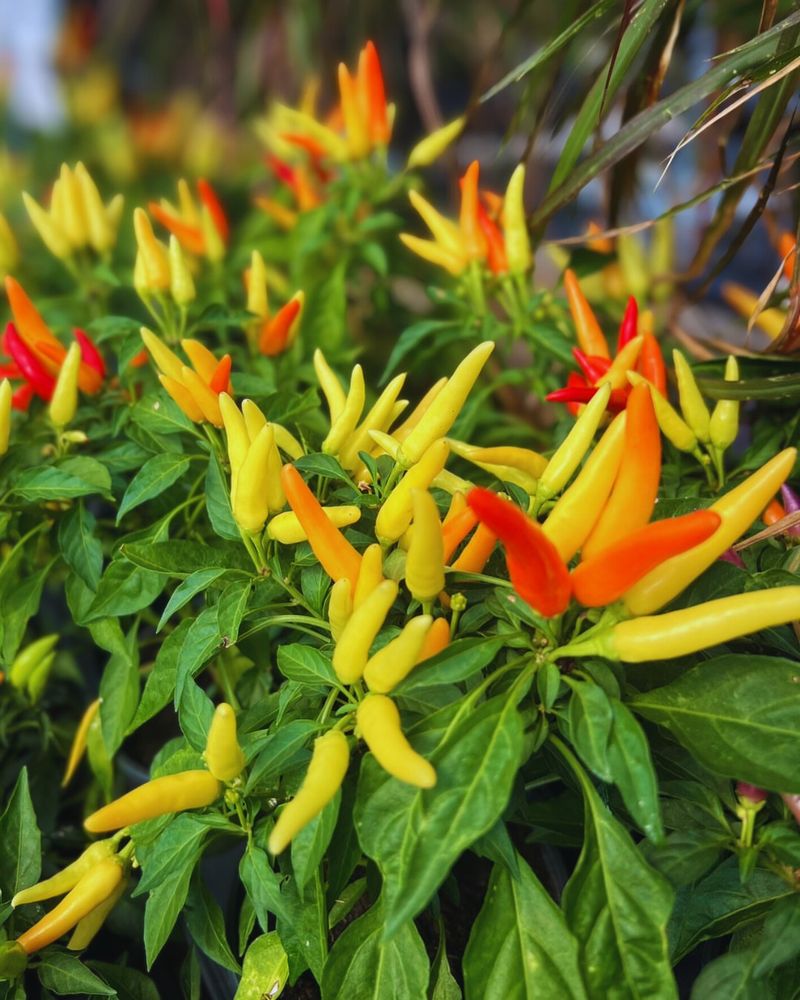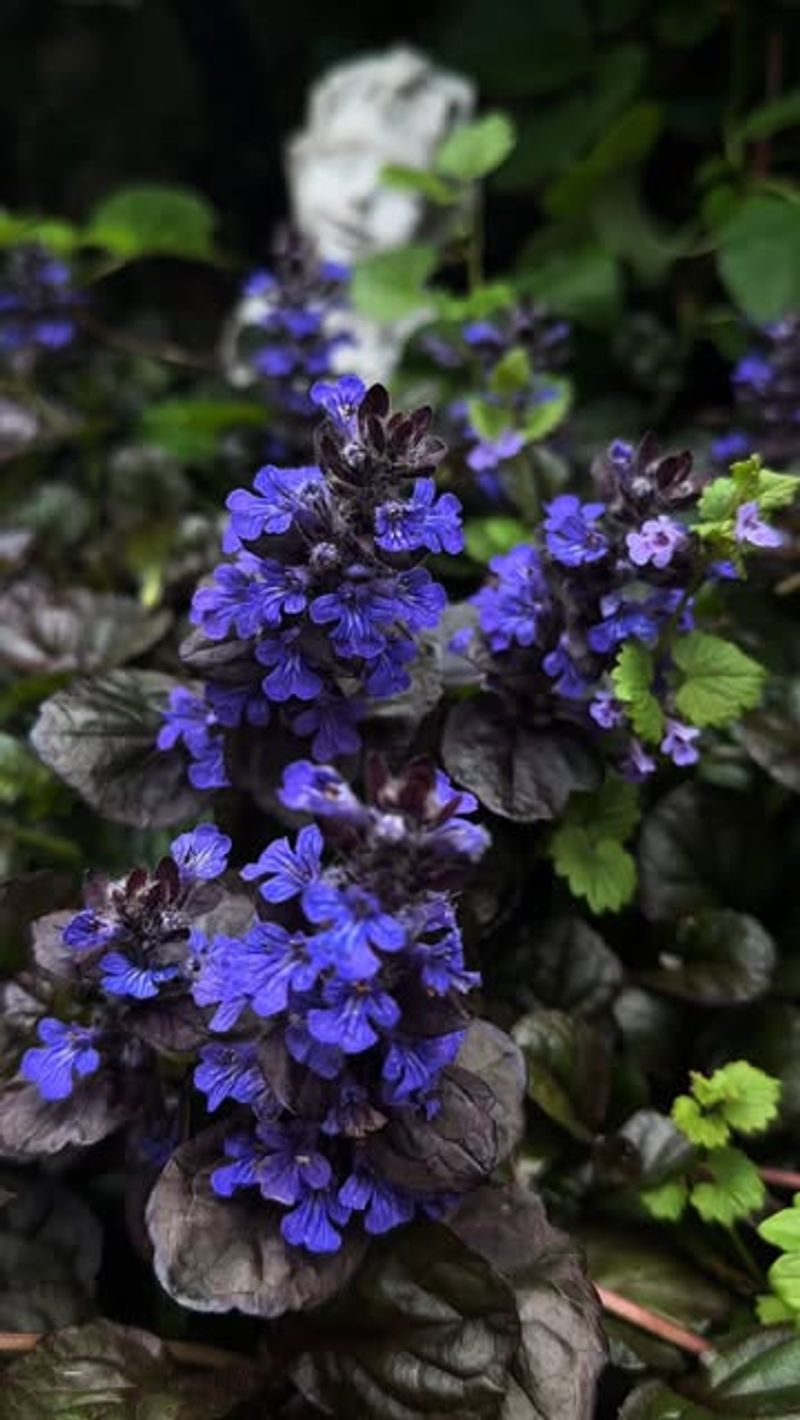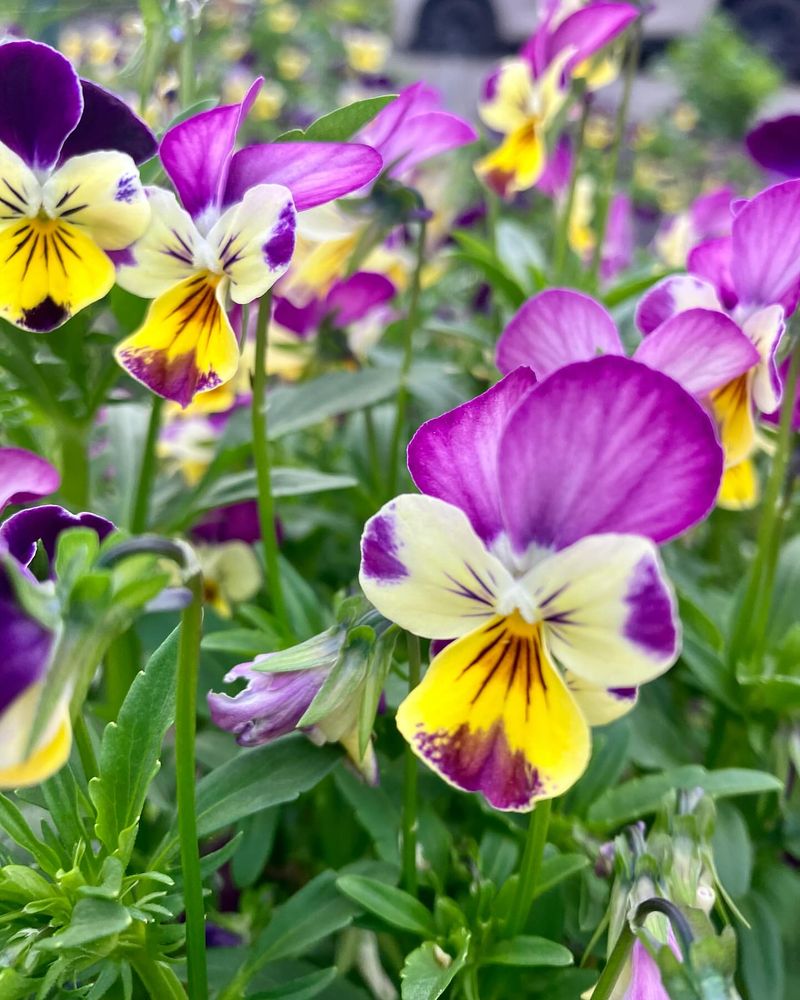Massachusetts gardens get a crisp, colorful boost when fall flowers fill window boxes. I’ve always loved how a few carefully chosen blooms can brighten the house exterior as leaves start to turn.
Hardy flowers and rich autumn hues make every window a mini display of seasonal charm. Arranging them thoughtfully brings texture, color, and life to even the shortest days.
These blooms turn ordinary boxes into eye-catching spots that celebrate fall’s beauty.
1. Pansies
Cool weather champions in Massachusetts gardens! These cheerful blooms thrive when temperatures dip, offering faces of purple, yellow, and orange that seem to smile at passersby.
Plant them in early fall, and they’ll reward Bay State gardeners with continuous color until the first hard freeze. Their compact size makes them perfect for window box arrangements.
2. Chrysanthemums
Nothing says autumn in the Bay State quite like these classic beauties. Available in rich burgundies, golds, and bronzes, mums create instant seasonal impact in window displays.
Many Massachusetts gardeners choose hardy varieties that return year after year. Their dense, mounded growth habit provides structure while their long-lasting blooms keep color going for weeks.
3. Ornamental Kale
With frilly, colorful leaves in purple, pink, and white, ornamental kale brings dramatic texture to Massachusetts window boxes. The cooler the weather gets, the more vibrant the colors become!
Many Bay State gardeners mix kale with flowering plants for contrast. Its frost resistance means it keeps looking gorgeous even after lighter freezes hit the region.
4. Asters
Star-shaped blooms in purples, pinks, and whites light up fall window boxes across Massachusetts. Native varieties attract the last butterflies of the season, bringing movement to your display.
Tough enough to handle New England’s unpredictable autumn weather, asters keep flowering even as days grow shorter. Their daisy-like appearance pairs beautifully with ornamental grasses in window arrangements.
5. Sedum
Succulent foliage topped with clusters of tiny star-shaped flowers creates a stunning textural element for Massachusetts window boxes. The ‘Autumn Joy’ variety lives up to its name with rusty-pink blooms that deepen to copper.
Drought tolerance makes sedum perfect for busy Bay State gardeners who might forget to water. Their structure remains attractive even after flowering, providing winter interest long after other plants fade.
6. Heuchera
Grown primarily for their colorful foliage, heucheras bring burgundy, caramel, and purple tones to Massachusetts window boxes. Their ruffled leaves catch morning light beautifully, especially with frost highlighting their edges.
When other plants stop performing in late fall, these Bay State favorites keep going strong. Pair them with flowering plants for contrast or group different varieties together for a tapestry effect.
7. Snapdragons
Surprising fall performers that continue blooming well into Massachusetts’ cooler months! Their tall spikes in reds, yellows, and oranges create vertical interest among mounded plants in window boxes.
Many Bay State gardeners don’t realize these aren’t just spring flowers. Cool autumn temperatures actually reinvigorate snapdragons that might have struggled during summer heat, giving them a beautiful second season.
8. Verbena
Clusters of tiny blooms in purple, pink, or white create clouds of color in Massachusetts window displays. Their trailing habit softens box edges beautifully, spilling over sides for a romantic effect.
Many verbena varieties handle the Bay State’s fall temperature swings with surprising resilience. Their continuous flowering habit ensures your window box maintains vibrant color until harder frosts arrive in late autumn.
9. Dusty Miller
Silvery-white foliage provides the perfect contrast to colorful blooms in Massachusetts window boxes. Its frost-resistant nature means it keeps looking good even as temperatures drop across the Commonwealth.
The velvety texture adds a touch of elegance to autumn displays. Many Bay State gardeners use dusty miller as a backdrop for vibrant mums or as a stand-alone feature for its distinctive color.
10. Dianthus
Spicy-scented blooms in shades of pink and white continue flowering well into Massachusetts’ fall season. Their neat, compact growth habit makes them ideal for smaller window boxes where space is limited.
Many Bay State gardeners appreciate how these hardy plants bounce back after light frosts. The fragrance adds an unexpected sensory element to window displays, noticeable when windows are opened on milder autumn days.
11. Nemesia
Dainty blooms that resemble tiny snapdragons create masses of color in Massachusetts window displays. Available in bright oranges, purples, and whites, they bring cheerful energy to autumn arrangements.
These cool-weather lovers actually prefer the Bay State’s fall temperatures to summer heat. Their light, sweet fragrance becomes more noticeable on sunny autumn afternoons, adding an unexpected sensory element to your window box.
12. Calibrachoa
Often called ‘million bells,’ these tiny petunia-like flowers bloom profusely in Massachusetts window boxes well into fall. Their trailing habit creates cascades of color in yellows, oranges, and purples that brighten dreary autumn days.
Many Bay State gardeners prefer them to traditional petunias for their better rain resistance. They continue flowering until harder frosts hit, making them excellent value for extending the season.
13. Osteospermum
Daisy-like blooms in purples, whites, and pinks open on sunny Massachusetts autumn days, closing at night or during cloudy weather. Their distinctive centers create visual interest in window box arrangements.
These cool-season performers actually prefer Bay State fall temperatures to summer heat. Many varieties feature unique spoon-shaped petals that add an exotic touch to traditional New England window displays.
14. Heather
Tiny bell-shaped flowers in purples and whites bloom alongside evergreen foliage, bringing subtle color to Massachusetts window boxes. Their mounded form provides structure even after flowering ends.
Many Bay State gardeners appreciate heather’s winter hardiness and year-round interest. The foliage often takes on bronze or purple tints in colder weather, extending the seasonal color palette into winter.
15. Ornamental Peppers
Colorful fruits in reds, purples, and oranges create unexpected focal points in Massachusetts window displays. The peppers change color as they mature, providing an evolving show throughout the season.
Many Bay State gardeners use these edible ornamentals as conversation starters. Their compact growth habit makes them perfect for window boxes, where their bright fruits can be appreciated up close.
16. Ajuga
Deep purple foliage provides rich color in Massachusetts window boxes even without flowers. In fall, the leaves often intensify in color, creating a dramatic backdrop for other plants.
Many Bay State gardeners appreciate ajuga’s spreading habit that fills gaps between showier specimens. Its evergreen nature means it continues providing interest in window boxes long after tender annuals have succumbed to frost.
17. Viola
Smaller cousins to pansies, these delicate-looking blooms are surprisingly tough in Massachusetts autumn conditions. Their tiny faces in purples, yellows, and whites bring whimsical charm to window displays.
Many Bay State gardeners find violas outperform larger pansies during temperature swings. They recover quickly from light frosts and continue flowering through much of the Commonwealth’s fall season, often until Thanksgiving in milder years.

